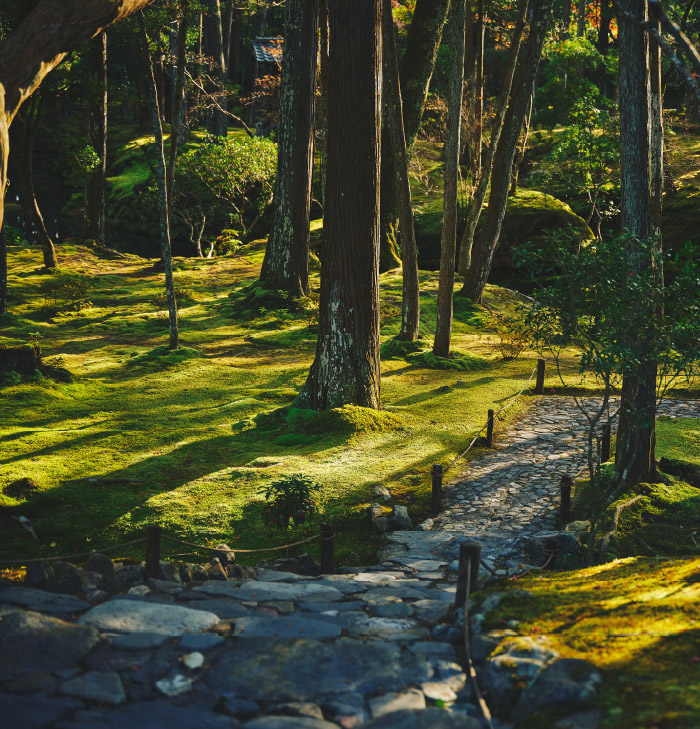about Saihoji
Walking in a World Heritage Garden
Saihoji was registered as a World Heritage Site in 1994 as a cultural asset of Japan’s historical capital city of Kyoto. One reason for the designation was that Saihoji occupies an important place in the history of Japanese gardens.
Originally founded in 731 as a temple of the Hosso Sect of Buddhism, Saihoji was restored as a Zen temple in 1339 by Muso Kokushi. When the temple was first restored, it had several garden structures, including a two-story tower called the Rokaku Ruriden. The pond garden and slopes became home to karesansui stone arrangements, the Shito-an zazen meditation hall, and Shukuentei Pavilion near the summit of the temple’s Mount Koin.
The Ruriden served as the model for the Golden and Silver Pavilions, and the temple’s dry landscape garden, which skillfully utilizes the natural topography, is said to be the oldest of its kind in Japan. The form of the garden, which incorporated the viewer’s viewpoint in its design, was different from all gardens that came before it, and it has had a great influence on those that came after. It is a well-known fact that the 15th century shogun Ashikaga Yoshimasa faithfully modeled elements of the garden of his Silver Pavilion on the structures within the Saihoji grounds, such as the Shito-an and Shukuentei Pavilion.
In 1469, the temple’s structures were burnt down in the Onin War (1467-1477), never to be rebuilt as they originally stood. Further calamities visited the temple in the form of floods during the Kan’ei (1624-1644) and Genroku (1688-1704) Eras. Towards the later Edo Period (1603-1867), moss began to flourish in the garden.
The shape of the pond, the positions of the islands, the stone arrangements, and other elements that had been laid out and designed by Muso Kokushi remain to this day.
Surrounded by the lush natural environment of mountains and located in a valley with abundant spring water—including the Sunset Spring that has given water since the days of Prince Shotoku (574-622)—Saihoji serves as a sacred place for all.


